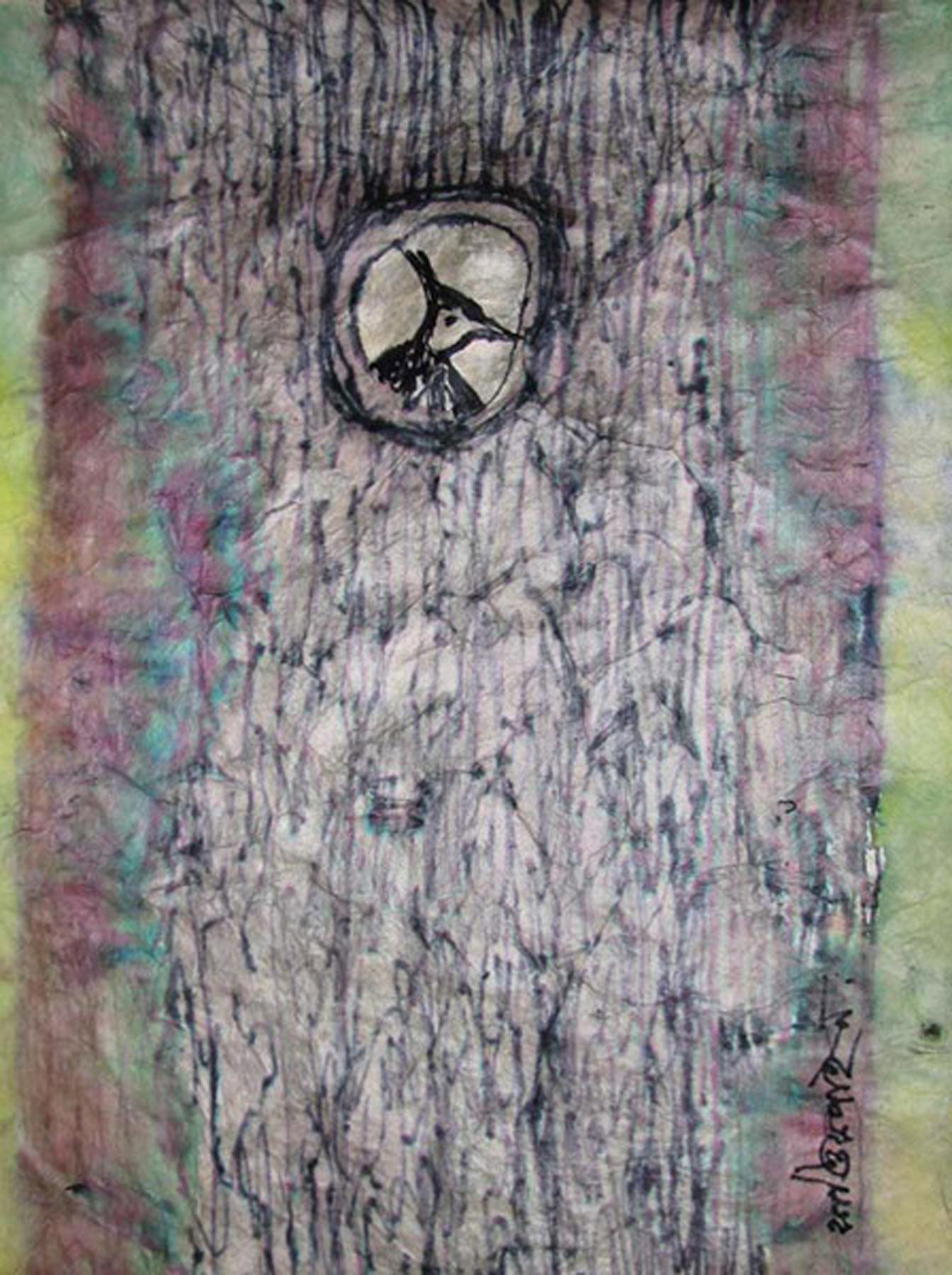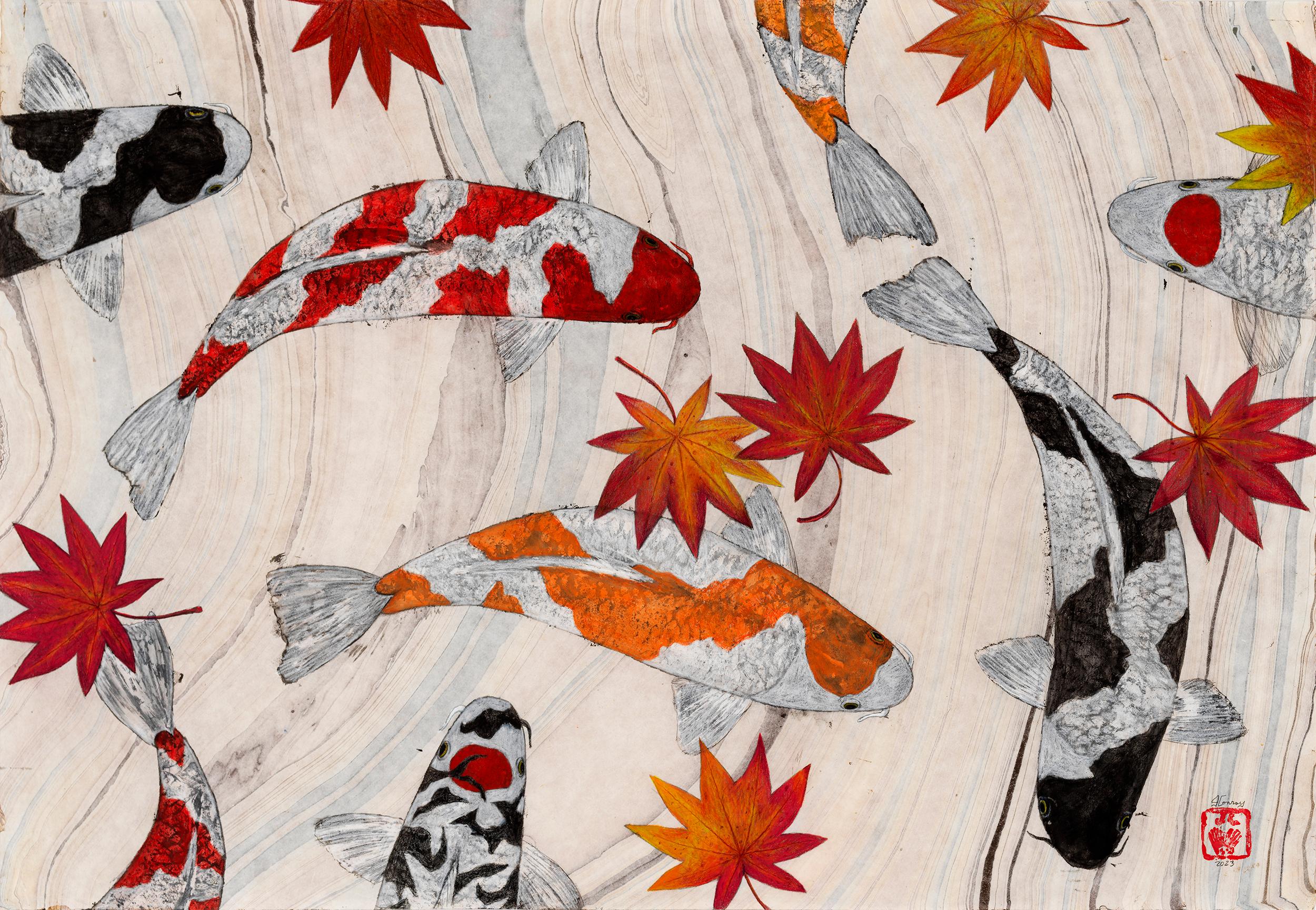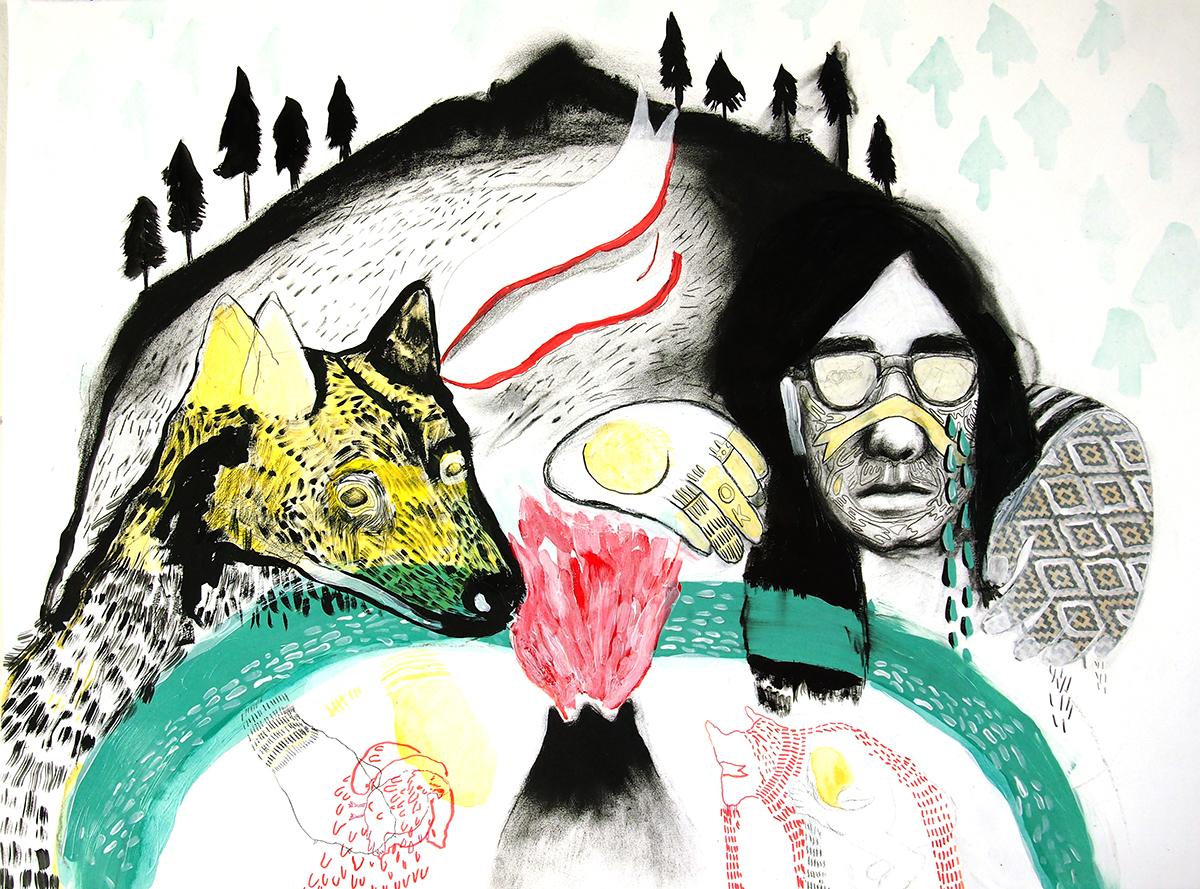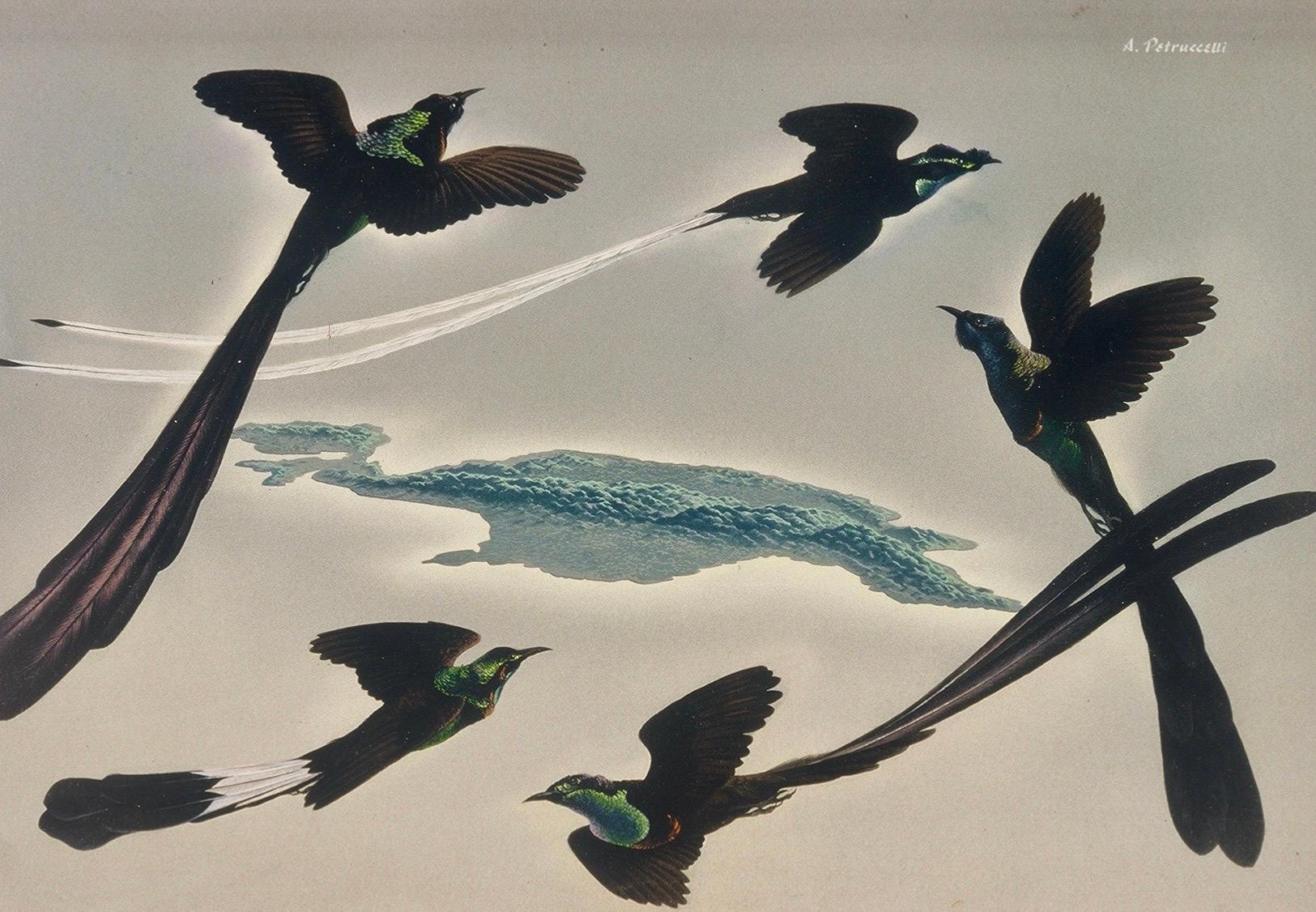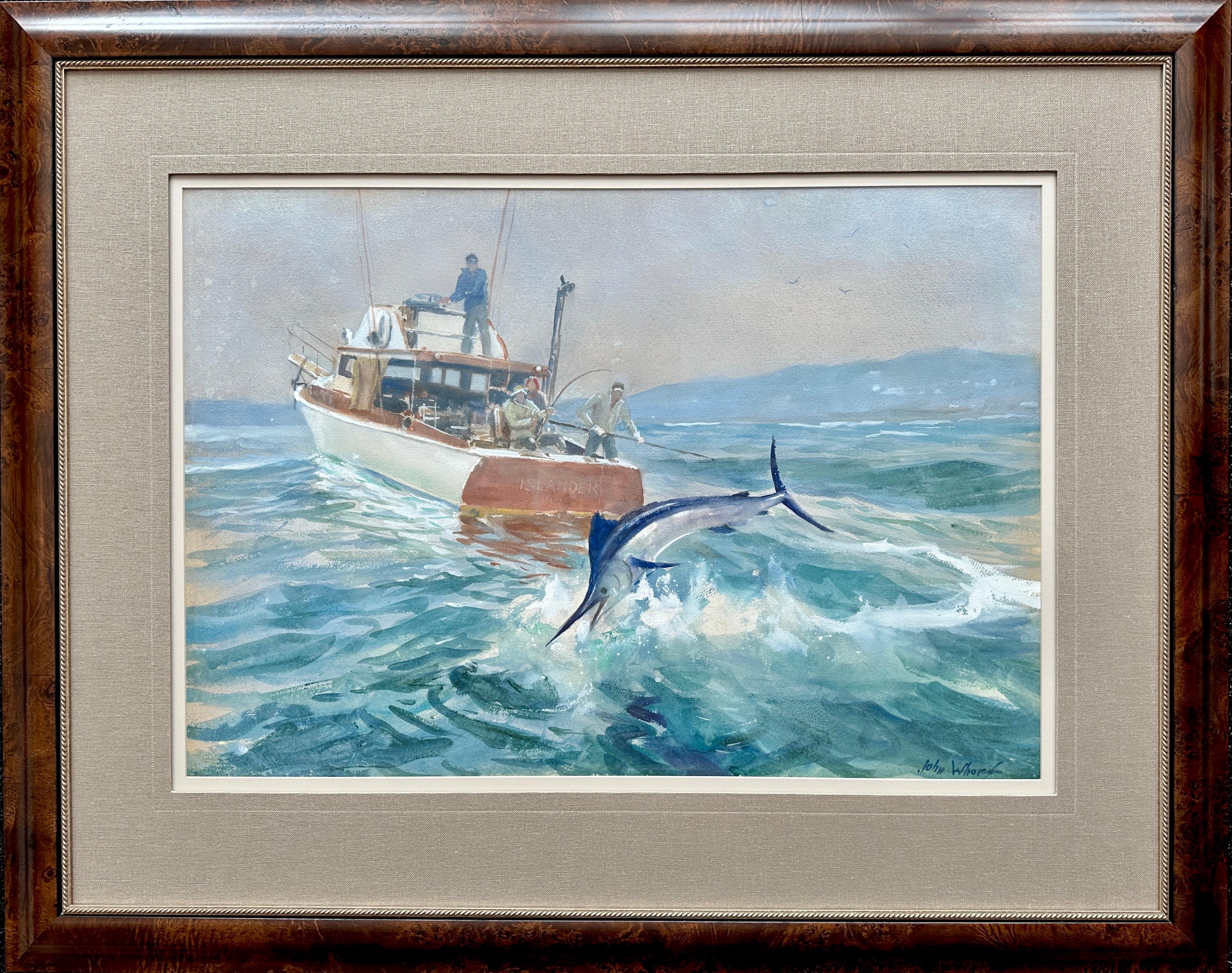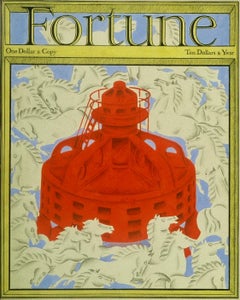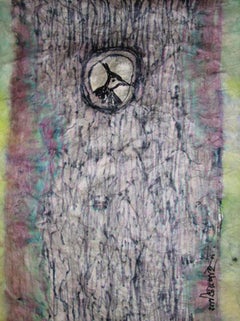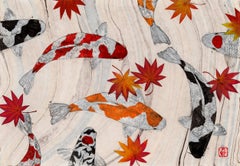Northern California Landscape with Eucalyptus and Sheep, Watercolor Painting
1 of 8
Sadie Van Patten HallNorthern California Landscape with Eucalyptus and Sheep, Watercolor PaintingMid 20th Century
Mid 20th Century
About the Item
- Creator:Sadie Van Patten Hall (1884 - 1967, American)
- Creation Year:Mid 20th Century
- Dimensions:Height: 14.75 in (37.47 cm)Width: 17.75 in (45.09 cm)Depth: 0.07 in (1.78 mm)
- Medium:
- Movement & Style:
- Period:
- Condition:Rough edges and some wrinkling of paper.
- Gallery Location:San Francisco, CA
- Reference Number:Seller: 880371stDibs: LU29824972132
You May Also Like
- Original Painting. Fortune Cover. Sept 1933 Illustration American Modern WPA EraBy Antonio PetruccelliLocated in New York, NYOriginal Painting. Fortune Cover. Sept 1933 Illustration American Modern WPA Era Antonio Petruccelli (1907 - 1994) Wild Horses & Dynamo Fortune cover published, September 1933 13 X ...Category
1930s American Modern Animal Paintings
MaterialsGouache, Board
- Birds, Nest, Shelter, Watercolor on Rice Paper, Black, Green, Pink "In Stock"By Kartick Chandra PyneLocated in Kolkata, West BengalKartick Chandra Pyne - Untitled - 18.5 x 14 inches (unframed size) Watercolor on Rice paper. Signed in Bengali. Inclusive of shipment in roll ...Category
Early 2000s Modern Landscape Drawings and Watercolors
MaterialsWatercolor, Rice Paper
- Autumn Cotilion - Japanese Style Gyotaku Painting on Marbled Mulberry PaperBy Jeff ConroyLocated in Chicago, ILIn Japan they are known as Nishikigoi, or living jewels. These brilliantly colored varieties of the Amur carp have been selectively bred by family owned fisheries for generations. When I began this series of Gyotaku (Japanese fish printing) I studied the many varieties of Koi, each with their own unique colors and patterns. My particular favorites are the Tanchos which can be identified by the distinct red spot on their heads. To create these pieces I print common carp I catch myself with sumi ink using traditional techniques used by Japanese fisherman dating back the mid 1800's. I then tint the images using watercolor. In each piece I hope to translate a sense of movement to give the viewer a sense of calm one might experience watching the living versions lazily meandering around a serene pond. —Jeff Conroy Several koi swim in a circle while autumn leaves fall on the surface of the water in this Gyo-tako method of painting by artist Jeff Conroy. After inking and taking impressions of the koi, the artist then uses watercolors to enhance their beauty. By using marbled mulberry paper to print on, he has created the illusion of water with the swirls of the mulberry paper. The paper itself has a soft hue and slightly wavy texture adding the overall feel of the artwork. This artwork is unframed. Contact gallery for framing options. Jeff Conroy Autumn Cotillion sumi ink and colored pencil on mulberry paper 25h x 37w in 63.50h x 93.98w cm JEC103 Gyotaku - A Japanese word translated from "gyo" meaning fish and "taku" meaning stone impression. It is the traditional Japanese method of printing fish, a practice which dates back to the mid-1800s. This form of nature printing was used by fishermen to record their catches, but has also become an art form of its own. Gyotaku is a Japanese method of printmaking that traditionally utilizes fish, sea creatures or similar subjects as printing "plates" in its process. The literal translation of the word is "fish stone rubbing...Category
21st Century and Contemporary Contemporary Animal Paintings
MaterialsSumi Ink, Watercolor, Mulberry Paper
- Cry Me a River (a fleuve)Located in Columbia, MOCry Me a River (a fleuve) 2017 cca. Acrylic, graphite, pen, gesso and gel medium on paper 22 x 30 inchesCategory
2010s Contemporary Animal Paintings
MaterialsGesso, Ink, Watercolor, Graphite
- Original Painting Life Mag Published 1955 Birds Animals Illustration Mid CenturyBy Antonio PetruccelliLocated in New York, NYOriginal Painting Life Mag Published 1953 Birds Animals Illustration Mid Century Antonio Petruccelli (1907 - 1994) The World We Live In Birds of Paradise Life Magazine Illustration ...Category
1950s American Realist Animal Paintings
MaterialsGouache, Board
- "New York City Skyline View from the East River, " Lionel Reiss, Jewish ArtistBy Lionel ReissLocated in New York, NYLionel S. Reiss (1894 - 1988) New York City Skyline View from the East River Watercolor on paper 13 x 19 inches Signed lower left In describing his own style, Lionel Reiss wrote, “By nature, inclination, and training, I have long since recognized the fact that...I belong to the category of those who can only gladly affirm the reality of the world I live in.” Reiss’s subject matter was wide-ranging, including gritty New York scenes, landscapes of bucolic Bucks County, Pennsylvania, and seascapes around Gloucester, Massachusetts. However, it was as a painter of Jewish life—both in Israel and in Europe before World War II—that Reiss excelled. I.B. Singer, the Nobel Prize winner for Literature, noted that Reiss was “essentially an artist of the nineteenth century, and because of this he had the power and the courage to tell visually the story of a people.” Although Reiss was born in Jaroslaw, Poland, his family immigrated to the United States in 1898 when he was four years old. Reiss's family settled on New York City’s Lower East Side and he lived in the city for most of his life. Reiss attended the Art Students League and then worked as a commercial artist for newspapers and publishers. As art director for Metro-Goldwyn-Mayer, he supposedly created the studio’s famous lion logo. After World War I, Reiss became fascinated with Jewish life in the ‘Old World.’ In 1921 he left his advertising work and spent the next ten years traveling in Europe, the Middle East, and North Africa. Like noted Jewish photographers Alter Kacyzne and Roman Vishniac, Reiss depicted Jewish life in Poland prior to World War II. He later wrote, “My trip encompassed three main objectives: to make ethnic studies of Jewish types wherever I traveled; to paint and draw Jewish life, as I saw it and felt it, in all aspects; and to round out my work in Israel.” In Europe, Reiss recorded quotidian scenes in a variety of media and different settings such as Paris, Amsterdam, the Venice ghetto, the Jewish cemetery in Prague, and an array of shops, synagogues, streets, and marketplaces in the Jewish quarters of Warsaw, Lodz, Krakow, Lublin, Vilna, Ternopil, and Kovno. He paid great attention to details of dress, hair, and facial features, and his work became noted for its descriptive quality. A selection of Reiss’s portraits appeared in 1938 in his book My Models Were Jews. In this book, published on the eve of the Holocaust, Reiss argued that there was “no such thing as a ‘Jewish race’.” Instead, he claimed that the Jewish people were a cultural group with a great deal of diversity within and between Jewish communities around the world. Franz Boas...Category
1940s American Modern Landscape Drawings and Watercolors
MaterialsPaper, Watercolor
$2,800 Sale Price20% Off

